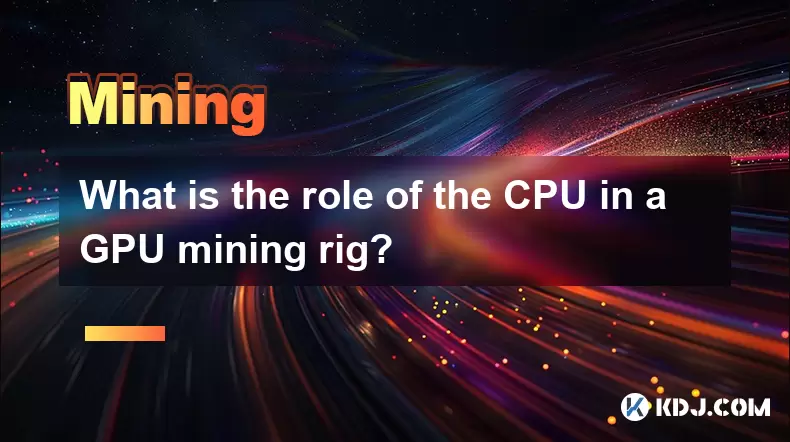-
 Bitcoin
Bitcoin $119,448.2396
0.27% -
 Ethereum
Ethereum $2,992.9919
0.78% -
 XRP
XRP $2.9074
1.58% -
 Tether USDt
Tether USDt $1.0001
0.00% -
 BNB
BNB $687.9097
-0.40% -
 Solana
Solana $161.5804
-0.47% -
 USDC
USDC $0.9998
0.01% -
 Dogecoin
Dogecoin $0.1948
-2.10% -
 TRON
TRON $0.3013
-0.08% -
 Cardano
Cardano $0.7286
-3.16% -
 Hyperliquid
Hyperliquid $47.3153
-3.81% -
 Stellar
Stellar $0.4543
-9.79% -
 Sui
Sui $3.8809
5.63% -
 Chainlink
Chainlink $15.6262
-0.55% -
 Hedera
Hedera $0.2368
-5.31% -
 Bitcoin Cash
Bitcoin Cash $501.2030
-0.80% -
 Avalanche
Avalanche $21.0650
-1.43% -
 UNUS SED LEO
UNUS SED LEO $9.0006
-0.39% -
 Shiba Inu
Shiba Inu $0.0...01310
-1.90% -
 Toncoin
Toncoin $3.0040
1.56% -
 Litecoin
Litecoin $93.8936
-1.20% -
 Monero
Monero $341.8918
1.27% -
 Polkadot
Polkadot $3.9087
-3.05% -
 Uniswap
Uniswap $8.9599
4.78% -
 Dai
Dai $0.9999
0.02% -
 Ethena USDe
Ethena USDe $1.0005
-0.02% -
 Bitget Token
Bitget Token $4.3954
-0.14% -
 Pepe
Pepe $0.0...01207
-2.26% -
 Aave
Aave $314.5223
1.72% -
 Bittensor
Bittensor $408.6988
2.76%
What is the role of the CPU in a GPU mining rig?
In cryptocurrency mining, GPUs handle complex calculations, while the CPU manages system operations, coordinates GPU tasks, and ensures smooth communication with mining pools.
Jul 15, 2025 at 07:56 am

Understanding the Relationship Between CPU and GPU in Mining
In the world of cryptocurrency mining, GPUs (Graphics Processing Units) are the primary workhorses responsible for performing the complex mathematical calculations required to validate transactions and mine blocks. However, the CPU (Central Processing Unit) plays a critical supporting role in ensuring the entire mining rig operates efficiently. While it may not contribute directly to the hash rate like the GPU does, its presence is indispensable in managing system operations.
One of the key functions of the CPU is to handle communication between the operating system and the GPUs. It sends instructions to each GPU, coordinates tasks, and ensures that mining software runs smoothly across all connected devices. Without a capable CPU, even high-end GPUs could underperform due to bottlenecks or mismanagement of resources.
Task Management and Instruction Handling by the CPU
The CPU acts as the central controller of the mining rig’s operations. It is responsible for initializing the boot process, loading the operating system, and launching mining software such as NiceHash, Claymore, or PhoenixMiner. Once the mining application is running, the CPU distributes tasks to each GPU, ensuring that they receive the correct data and workloads.
Each GPU requires specific instructions from the CPU to begin processing hashes. This includes information about the current block header, nonce ranges, and other parameters necessary for mining. Even though the actual hashing is performed by the GPU, the CPU must constantly monitor and manage these processes to avoid conflicts or errors.
- The CPU assigns unique nonces to each GPU thread.
- It manages memory allocation and task scheduling.
- It facilitates communication between the mining pool and individual GPUs.
CPU Requirements for Effective Mining Operations
While high-end CPUs are not strictly necessary for mining rigs, choosing the right one can significantly improve performance and stability. The ideal CPU should support multiple PCIe lanes to accommodate several GPUs simultaneously. Additionally, it should have sufficient power efficiency to avoid unnecessary energy consumption.
For example, an Intel Core i3 or AMD Ryzen 3 processor with at least four cores is often sufficient for managing a multi-GPU mining rig. These CPUs provide enough processing power to coordinate GPU operations without becoming a bottleneck. Overclocking or using high-core-count CPUs is generally unnecessary since the computational load on the CPU remains relatively light compared to that on the GPUs.
- Low to mid-range CPUs are typically adequate for mining purposes.
- A CPU with more PCIe lanes allows for better GPU connectivity.
- Energy-efficient CPUs help reduce overall power consumption.
BIOS and Firmware Interaction via the CPU
The CPU also plays a vital role in interacting with the motherboard's BIOS and firmware, which are essential for configuring hardware settings specific to mining. Many miners tweak their BIOS settings to enable features like Resizable BAR, PCIe bifurcation, or memory remapping—all of which are accessed and configured through the CPU-controlled boot process.
Moreover, during startup, the CPU initializes the POST (Power-On Self-Test), checks hardware integrity, and loads the firmware necessary for GPU recognition. If the CPU fails to initialize correctly, the mining rig will not be able to detect or utilize any connected GPUs.
- The CPU controls BIOS access and firmware updates.
- It initiates POST and ensures proper hardware detection.
- Support for advanced features like Resizable BAR depends on CPU compatibility.
Operating System and Software Coordination by the CPU
Once the mining rig boots up, the CPU continues to oversee the execution of the operating system and mining software. Whether running Windows or a lightweight version of Linux, the CPU handles multitasking, resource allocation, and background processes crucial to maintaining uptime and performance.
Mining software relies heavily on the CPU to maintain connections with mining pools, submit shares, and receive updated work units. Any lag or inefficiency in CPU performance can lead to missed shares or reduced profitability. Therefore, while the GPU performs the heavy lifting, the CPU ensures seamless communication and coordination between all components.
- The CPU maintains stable connections with mining pools.
- It submits mined shares and retrieves new work units from the pool server.
- Efficient CPU performance helps prevent connection drops and missed shares.
Frequently Asked Questions
Can a mining rig operate without a CPU?
No, a mining rig cannot function without a CPU. The CPU is essential for booting the system, initializing hardware, and coordinating communication between the GPU and mining software.
Is it better to use an Intel or AMD CPU for mining?
Both Intel and AMD offer suitable CPUs for mining. The choice largely depends on motherboard compatibility, PCIe lane availability, and budget. Neither architecture has a significant advantage over the other in mining-specific tasks.
Does overclocking the CPU improve mining performance?
Overclocking the CPU generally does not enhance mining performance because the CPU's workload in mining is minimal. However, if the CPU is unstable or overheating, overclocking may cause crashes or instability in GPU operations.
How many cores does a mining CPU need?
A mining CPU typically requires at least 4 cores to effectively manage multiple GPUs and background processes. More cores are not necessary unless the system runs additional services alongside mining.
Disclaimer:info@kdj.com
The information provided is not trading advice. kdj.com does not assume any responsibility for any investments made based on the information provided in this article. Cryptocurrencies are highly volatile and it is highly recommended that you invest with caution after thorough research!
If you believe that the content used on this website infringes your copyright, please contact us immediately (info@kdj.com) and we will delete it promptly.
- BDAG X1 App Skyrockets, SHIB Rebounds, and XMR Holds Strong: What's Happening?
- 2025-07-15 07:10:12
- Ruvi AI: The Audited Token Set to Outshine Ethereum with Massive Gains?
- 2025-07-15 06:50:12
- DeFi Token with 10X Potential: Mutuum Finance and the Year-End Opportunity
- 2025-07-15 06:50:12
- Bitcoin's Wild Ride: $120K Surge, Crypto Bill Buzz, and What It All Means
- 2025-07-15 07:10:12
- XRP's Cup and Handle: Millionaire Target in Sight?
- 2025-07-15 07:50:12
- Bitcoin Blasts Past $186,000: A New Milestone or Just the Beginning?
- 2025-07-15 08:10:12
Related knowledge

How are crypto mining profits taxed?
Jul 14,2025 at 12:28am
Understanding Cryptocurrency Mining and TaxationCryptocurrency mining involves validating transactions on a blockchain network and earning rewards in ...

How to keep a mining rig cool
Jul 12,2025 at 01:42pm
Understanding the Importance of Cooling in Mining RigsCryptocurrency mining is an intensive process that places heavy demand on hardware components, p...

How much does it cost to start crypto mining?
Jul 13,2025 at 12:22am
Understanding the Basic Costs of Crypto MiningStarting crypto mining involves several upfront and ongoing expenses. The primary costs include hardware...

What is the most profitable crypto to mine?
Jul 13,2025 at 07:00am
Understanding Mining Profitability in CryptocurrencyWhen evaluating the most profitable crypto to mine, it's essential to consider several factors tha...

What do I need to start mining crypto?
Jul 13,2025 at 12:28am
Understanding the Basics of Crypto MiningCrypto mining is the process by which transactions are verified and added to a blockchain, and new coins are ...

How does crypto mining work?
Jul 13,2025 at 11:01am
Understanding the Basics of Crypto MiningCrypto mining is the process through which new cryptocurrency coins are introduced into circulation and trans...

How are crypto mining profits taxed?
Jul 14,2025 at 12:28am
Understanding Cryptocurrency Mining and TaxationCryptocurrency mining involves validating transactions on a blockchain network and earning rewards in ...

How to keep a mining rig cool
Jul 12,2025 at 01:42pm
Understanding the Importance of Cooling in Mining RigsCryptocurrency mining is an intensive process that places heavy demand on hardware components, p...

How much does it cost to start crypto mining?
Jul 13,2025 at 12:22am
Understanding the Basic Costs of Crypto MiningStarting crypto mining involves several upfront and ongoing expenses. The primary costs include hardware...

What is the most profitable crypto to mine?
Jul 13,2025 at 07:00am
Understanding Mining Profitability in CryptocurrencyWhen evaluating the most profitable crypto to mine, it's essential to consider several factors tha...

What do I need to start mining crypto?
Jul 13,2025 at 12:28am
Understanding the Basics of Crypto MiningCrypto mining is the process by which transactions are verified and added to a blockchain, and new coins are ...

How does crypto mining work?
Jul 13,2025 at 11:01am
Understanding the Basics of Crypto MiningCrypto mining is the process through which new cryptocurrency coins are introduced into circulation and trans...
See all articles

























































































